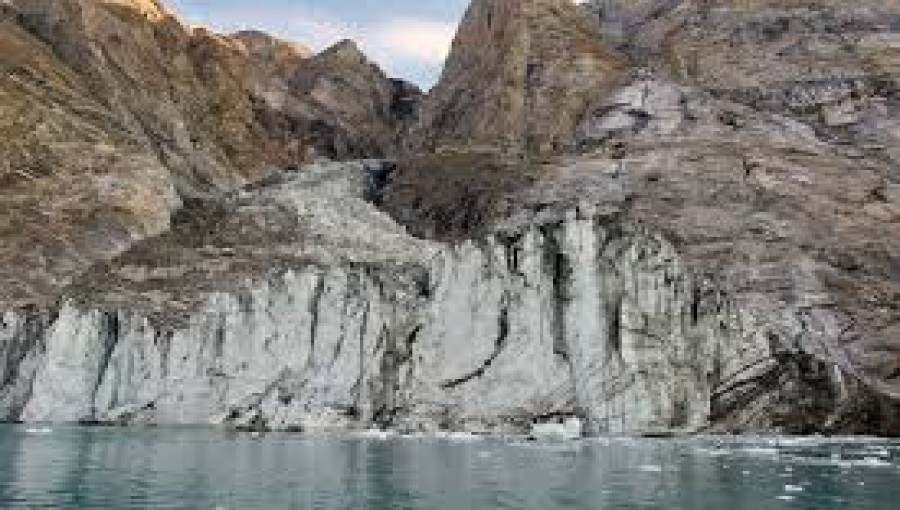
Photo: Online
A massive landslide in Greenland, triggered by glacial melting, sent over 25 million cubic meters of debris into a fjord, creating a tsunami and seismic waves detected worldwide—an alarming sign of climate change's accelerating impact.
Greenland, Sep 14 (V7N) - In an unprecedented event last September 2023, a mysterious seismic signal reverberated across the globe, lasting for over a week. This signal, unlike any other recorded in history, sparked curiosity and concern among scientists worldwide. Dubbed a "USO" (Unidentified Seismic Object), the strange occurrence prompted a thorough investigation involving 68 experts from 15 countries.
"USO is an informal term seismologists use when they encounter seismic signals that defy explanation," said Kristian Svennevig, the lead author of the study on the USO. Initially, scientists ruled out the possibility of an earthquake. Svennevig described typical earthquake tremors as "hitting a piano with full force," resulting in chaotic sound bursts. In contrast, the USO signal resembled "striking a single piano key," producing a continuous tone that persisted for an astonishing nine days.
After extensive research, scientists traced the source of this persistent signal to a massive landslide in Greenland, triggered by the melting of a glacier—directly linked to climate change. The study, published in Science (Vol. 385, Issue 6714, September 12, 2024), revealed that a mountaintop above the Dickson fjord in eastern Greenland collapsed, releasing over 25 million cubic meters of rock and ice into the fjord. This massive landslide created a tsunami, with waves soaring up to 200 meters (656 feet) high. The rocky terrain of the fjord trapped the energy, creating a seiche—a sloshing effect of water in a confined space—which generated the seismic signal detected worldwide.
However, confirming this was no easy task. Even after identifying the probable cause, scientists required additional data to solidify their theory. "We had to access declassified military bathymetric maps and refine our tsunami models to prove that the tsunami was trapped between the fjord’s sides, resonating for nine days," Svennevig explained.
The seiche waves reached 7 meters in height and oscillated at a frequency of 11.45 millihertz. The global seismic signal mirrored this, resonating at 10.88 millihertz, creating waves every 90 seconds. This global phenomenon was akin to an alarm bell ringing for nine continuous days—a stark warning of the intensifying impact of climate change.
Svennevig and his team believe that similar seismic events could become more common as the Arctic warms. "As glaciers continue to destabilize due to rising temperatures, we may see more landslides and tsunamis in similarly vulnerable regions," Svennevig warned. He emphasized that while the mystery of this USO is solved, many more such events could arise as global warming accelerates.
This extraordinary seismic event underscores the far-reaching and complex consequences of climate change. Scientists are urging the global community to take immediate action before more unpredictable and devastating natural phenomena occur.
END/ABU/SMA/

Comment: